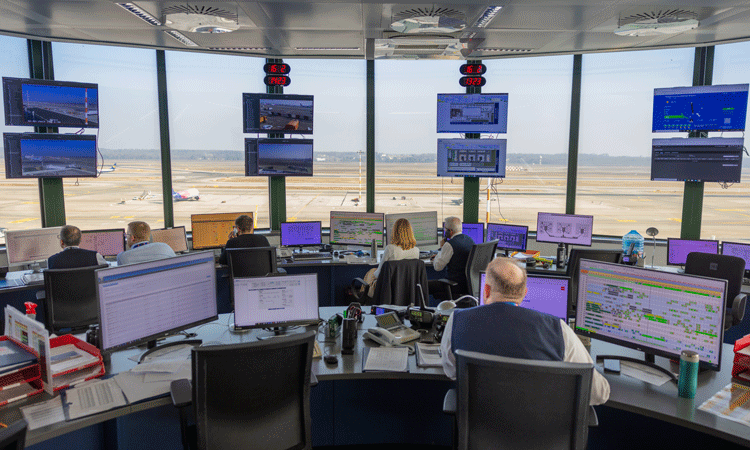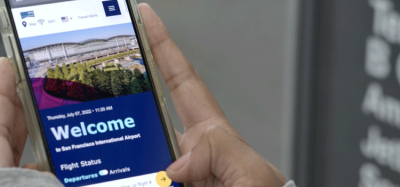Integrating emerging technologies into airport operations
- Like
- Digg
- Del
- Tumblr
- VKontakte
- Buffer
- Love This
- Odnoklassniki
- Meneame
- Blogger
- Amazon
- Yahoo Mail
- Gmail
- AOL
- Newsvine
- HackerNews
- Evernote
- MySpace
- Mail.ru
- Viadeo
- Line
- Comments
- Yummly
- SMS
- Viber
- Telegram
- Subscribe
- Skype
- Facebook Messenger
- Kakao
- LiveJournal
- Yammer
- Edgar
- Fintel
- Mix
- Instapaper
- Copy Link
Posted: 15 July 2024 | Alessandro Fidato | No comments yet
Alessandro Fidato, Chief Operating Officer of SEA Milan Airports, explains how new technologies, like smart security, biometrics, and self-service, are providing seamless passenger experiences by reducing waiting times and empowering passengers to be in control of their own journey.


Credit: SEA Milan.
SEA Milan Airports is implementing a strategy that is focused on improving the customer experience by making the passenger journey frictionless and contactless, reducing the time to gate and, at the same time, improving the overall experience.
SEA started with the recent renovation of Linate, Milan City Airport, to completely redesign the passenger experience and implement new technologies into airport operations aimed at applying ‘self’ services, thus allowing passengers to navigate through the airport easily and quickly. In fact, Linate aims to be one of the best European city airports serving Milano, one of the most dynamic cities in Europe and Italy, providing great comfort and wellbeing to passengers in a sustainable environment leveraging on technological innovation.
Biometric technology
To pursue this goal, just a few days before the pandemic, in 2020, SEA launched brand-new biometric technology at Linate, FaceBoarding, with the aim to make passengers’ journeys seamless, faster and reduce the waiting time at different touchpoints throughout the terminal. FaceBoarding, based on biometric facial recognition, enables passengers, after enrollment at the airport or through the mobile app, to go through check-in, security and boarding with no need to show boarding passes and ID documents. SEA recently awarded the contract for the full extension in Linate, in 2024, of FaceBoarding to all security turnstiles and boarding gates making Linate one of the first fully biometric airports. Moreover, SEA is exploring opportunities for expanding its business by better exploiting biometric technology, such as for access to parking lots and VIP lounges and shopping in the retail area. SEA is also discussing the possibility of implementing FaceBoarding in Malpensa. SEA, considering the sensitivity of biometric data, has taken all the countermeasures offered by technology to make this solution reliable, secure, and fully GPDR compliant and has positively passed the audit by the Italian Data Protection Authority (see photo 1).
Smart security
Furthering the goal of a seamless and contactless journey, SEA inaugurated its new security checkpoint in Linate in October 2020, becoming one of the first fully EDS-CB equipped airports in Europe. SEA redesigned the security checkpoint implementing the ‘smart security’ concept – a vast array of technologies and neuroscience applied to architectural design to reduce the anxiety level of passengers. Thanks to computed tomography (CT) screening technology on hand luggage, SEA enhanced both the security level and the passenger experience as the new detection technology allows passengers to keep devices and liquids (even above 100ml) in their cabin baggage. Moreover, the installation of shoe analysers prevents the need for passengers to remove their shoes, increasing throughput and customer satisfaction (see photo 4).
Smart security not only improves passenger experience, but allowed SEA to deal with the difficulty of the labour market. In particular, the efficiency brought by the new machines (over 300 pax/h during peaks) reduced the personnel needed at the checkpoint. This allowed SEA to reduce disruption during Summer 2022 when many airports across Europe were struggling with severe problems due to a lack of security agents.
Self-service technology
Finally, SEA is offering a self-bag-drop solution integrated with FaceBoarding to all its passengers travelling with hold luggage in Linate, allowing them to exploit biometric recognition to check the baggage autonomously (see photo 6, above right). In Malpensa Terminal 1, SEA is testing self-bag-drop technology, fully manageable on the airline mobile app installed on passengers’ personal smartphones. The process is divided into two steps. At the first step, a scale and a printer are managed through the mobile app where the passenger can pay extras without any interaction with check-in agents or physical devices at the airport (all operations are self‑managed on the passenger’s smartphone). At the drop-off, similarly, the passenger will check-in their luggage and interact with the belt and the tag scanner with its device.All passengers travelling from Malpensa Terminal 2 are required to autonomously check their luggage at the self-bag-drop counter, as manual check‑ins are only available in case of hardware or software disruption of the automatic system (see photo 7, above).
From an intrinsic operational point of view, the use of technology enhances a collaborative approach between all stakeholders present at the airport. SEA is accelerating the creation of an APOC (Airport Operations Centre), i.e. a ‘place’ that can be the operational control centre of the airport, where all monitoring tools for operations are centralised and various stakeholders can contribute in real time, with each maintaining their responsibility, to the coordinated management of airport processes. APOC enables collaboration and sharing with all airport stakeholders that have access to the same information with the goal of optimising operations, reducing unexpected critical issues and improving punctuality. The software platform will offer a clear and uniform view of the flow of passengers at the airport, of the baggage handling processes as well as the position of aircraft, vehicles and equipment on the apron. Achieving a higher situational awareness will guarantee a collaborative decision-making process between the actors involved and a greater level of coordination, fundamental for reacting promptly to countless different scenarios and possible critical issues. Furthermore, APOC acts as a data collection basin, which could be the basis for what-if analysis and implementation of algorithms useful for the development of increasingly accurate and flexible traffic forecasts that will ultimately improve the passenger experience. (see photo 8 + photo 9 for samples of Dashboard).
The author wishes to thank Riccardo Kustermann, Client Management & Apt Performances Director and Alberto Gazzola, Operations Malpensa, both from SEA Milan.


Credit: SEA Milan
Alessandro Fidato began his career in high-speed railway construction and later contributed to Rome Airport (ADR) master planning development. Head of Transport Infrastructures at Autostrade per l’Italia S.p.A. from 2002 to 2010, he then assumed key roles at Naples International Airport, culminating in his current positions as Chief Operating Officer and Accountable Manager for SEA Milan Airports since 2019. Alessandro’s career reflects a trajectory of strategic leadership and significant contributions to the aviation and transportation industry as member of EASA SAB and Board Member of SESAR3 JU.
Issue
Related topics
Biometrics, Contactless / Touchless technology, Digital transformation, New technologies, Passenger experience and seamless travel, Security, Self-service


















